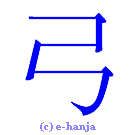I was going to post this in General KMA or Taekwondo, but the Hapkido section needs some love, and the question arises from the HKD vocabulary at the school where I have trained for several years, so I'll post it here.
At every belt level, we have a terminology section on the test. In working with students, I go over the vocab prior to our testing, and after several years of doing this, I have seen four different words that seem to have similar meanings. The three words are:
Begi
Chigi
Chireugi
and
Taerigi
Near as I can tell they all essentially mean strike. Begi seems to be used only in regards to sword work, so I take it to mean strike/cut. But I have also seen Chigi used by some in regards to sword work.
I would be most appreciative to have clarification from those who are more versed in the language than I.
Daniel
At every belt level, we have a terminology section on the test. In working with students, I go over the vocab prior to our testing, and after several years of doing this, I have seen four different words that seem to have similar meanings. The three words are:
Begi
Chigi
Chireugi
and
Taerigi
Near as I can tell they all essentially mean strike. Begi seems to be used only in regards to sword work, so I take it to mean strike/cut. But I have also seen Chigi used by some in regards to sword work.
I would be most appreciative to have clarification from those who are more versed in the language than I.
Daniel


